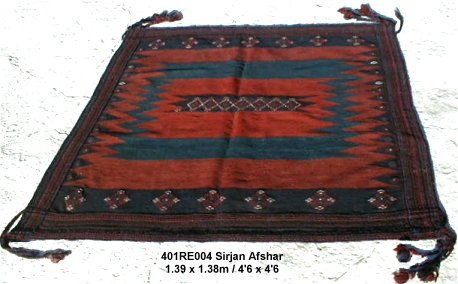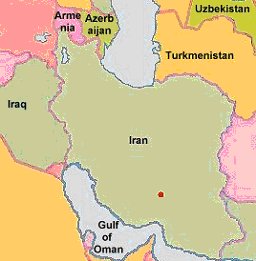

 |
 |
Origin: Sirjan Afshar Soufreh
Central Southern Iran
Woven: c. 1935
Size: 1.39 x 1.38m 4'6" x 4'6"
Ref: 401RE004
Price Euros 1100
Soufreh is one of a number of western spellings, including sofreh, soffrai etc. of the Persian word for a small rug. It refers to either the very narrow rugs woven by various tribal groups in Iran as runners, to fill in along the sides of large carpets in a room, or more commonly, to the almost square table rugs used on the floor as a tablecloth on which plates of food are placed. These eating cloth soufrehs consist of mostly a kilim (flatweave) square plain ground containing a square zigzag motif generally with a central medallion. A different weaving technique is frequently used for the borders, often a combination of parallel wrapping and extra cord reinforcement, (like this soufreh) or can have a knotted pile selvedge and ends. Occasionally the corners are decorated with tassels containing good luck beads or shells, but these are often missing on older examples. Soufrehs are woven by a number of tribes in Iran including the Afshar, the Balouch and some Kurdish tribes. This particular soufreh was woven by the Afshar, one of the most widely dispersed tribes of the Turkic peoples, there being other substantial Afshar clans in Azerbaijan and Kamseh in the north west, Khorassan in the north east, Kerman in the south. The Afshar are still in Khuzestan in the southwest near the Zagros Mountains, where they originally settled after mass migration from Turkestan in the twelfth century AD. This piece comes from the market town of Sirjan in southern central Iran since it shows the mixture of white and blue flower motifs typical of the many soufrehs made in this town and its surrounding area. Because of their shape, eating cloth soufrehs like this one may be used on the floor, as a wall hanging, or even as a table cloth - its original function!